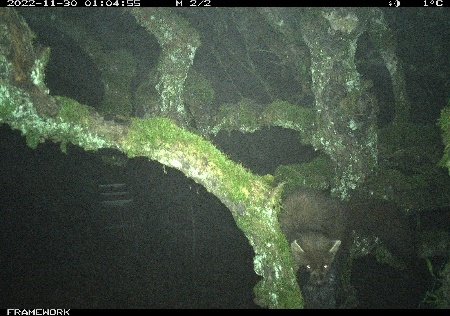The Night Comes Alive
- Taskscape Associates
- Feb 1, 2023
- 2 min read
Updated: Jun 13, 2024
The Luxembourg Cluster install nocturnal cameras for biodiversity monitoring...

As part of their quest to better understand the biodiversity within the Luxembourg Farmer Cluster, the cluster recently installed night-time camera traps.

Previously, biodiversity assessments in the cluster primarily focused on diurnal animals, leaving the realm of nocturnal biodiversity largely unrecorded. Recognising this gap, facilitator Youri Martin suggested the use of camera traps, which have proved to be illuminating. The procedure of installing and securing the camera traps was demonstrated to farmers in the cluster keen on participating and six enthusiastic volunteers took the responsibility of installing the traps on their properties.
The results have been fantastic with the very first set recorded capturing excellent images of nocturnal wildlife in their natural habitat. Buoyed by this success, it was unanimously decided to continue the nocturnal monitoring.

Between November 2022 and January 2023, over 5,230 pictures were captured, showcasing thriving nocturnal biodiversity. From January to June 2023, 8,000 pictures were collected, featuring a diverse array of rare and elusive species.
Locations are selected strategically in areas where wildlife observation looks most promising due to the habitats present. Cluster farmers maintain the cameras, replacing batteries and memory cards. The images are then downloaded and sorted before they're encoded into a citizen science database. This activity contributes to the data pipeline of Work Package 3 on Citizen Science, fostering collaborative research efforts.
To take the inititiave to the next level, Framework cluster farmers will be actively involved in sorting and identifying the animal pictures. Consortium partner IIASA's Picture Pile Platform will aid them in this process, enabling them to witness the high diversity of species that coexist within their orchards. This hands-on approach not only fosters an appreciation for nocturnal biodiversity but also includes farmers in conservation efforts and connects them to the life on their land.











